Mentees:
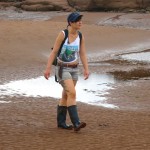 Angela Glanzmann is an emerging artist and cultural worker living in Halifax, NS. Having graduated from NSCAD University in 2013, Glanzmann now works in fields of sculpture, video, installation and performance. Her work centres around themes of survival, loneliness, bodily presence and occasionally, snark. She has exhibited in galleries and artist run centers in Canada and in Edinburgh, UK including the Anna Leonowens Gallery, Hermes Gallery, The Khyber Centre for the Arts, the Old Ambulance Depot and the Lethbridge University Art Gallery. Her installations have been exhibited as part of Nocturne: Art at Night and in the Halifax Stanfield International Airport. For the past several months Glanzmann has been mentored under artist and NSCAD faculty Barbara Lounder as part of the Visual Arts Nova Scotia Mentorship program.
Angela Glanzmann is an emerging artist and cultural worker living in Halifax, NS. Having graduated from NSCAD University in 2013, Glanzmann now works in fields of sculpture, video, installation and performance. Her work centres around themes of survival, loneliness, bodily presence and occasionally, snark. She has exhibited in galleries and artist run centers in Canada and in Edinburgh, UK including the Anna Leonowens Gallery, Hermes Gallery, The Khyber Centre for the Arts, the Old Ambulance Depot and the Lethbridge University Art Gallery. Her installations have been exhibited as part of Nocturne: Art at Night and in the Halifax Stanfield International Airport. For the past several months Glanzmann has been mentored under artist and NSCAD faculty Barbara Lounder as part of the Visual Arts Nova Scotia Mentorship program.
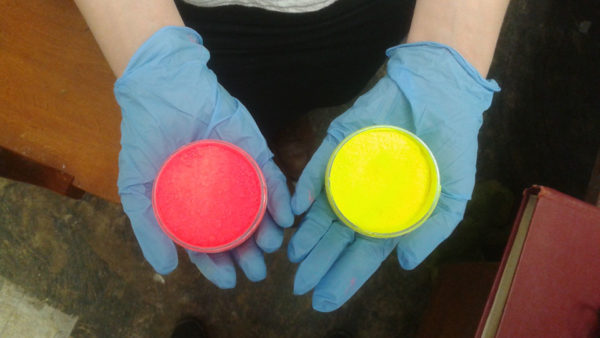
Loneliness is a place of trauma, vulnerability, humour, radicalism, criticality, intimacy, earnestness and disgust. We as individuals are terrified of loneliness, that it may seep under our skin and infect our bodies, but it is an inevitable phenomenon that is collectively experienced in many different capacities. I keep making work with themes of loneliness because it is so multifaceted and never strikes as the same condition twice. Outlining personal narratives, socio-political conditions and physical spaces are all ways that I develop these sensations, feelings and questions into something tangible and larger than myself. I work through these investigations via sculpture, video, performance and installation depending on the conditions of the project that I want to carry through.
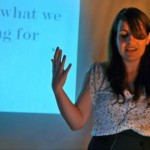 Kate Walchuk is an artist and DJ in Dartmouth, NS. She is currently the Exhibitions Coordinator at Anna Leonowens Gallery, NSCAD University and is a Khyber Arts Society board member. Recent exhibitions include Somewheres at the Confederation Centre for the Arts (Charlottetown), GOOD SHAPE at Seeds Gallery (Halifax) and Cake Stand at Queen Specific (Toronto). She has DJ’ed numerous weddings, fundraisers, birthdays, New Year’s Eve (2013), tailgate parties, graduation dances and one time on a boat.
Kate Walchuk is an artist and DJ in Dartmouth, NS. She is currently the Exhibitions Coordinator at Anna Leonowens Gallery, NSCAD University and is a Khyber Arts Society board member. Recent exhibitions include Somewheres at the Confederation Centre for the Arts (Charlottetown), GOOD SHAPE at Seeds Gallery (Halifax) and Cake Stand at Queen Specific (Toronto). She has DJ’ed numerous weddings, fundraisers, birthdays, New Year’s Eve (2013), tailgate parties, graduation dances and one time on a boat.
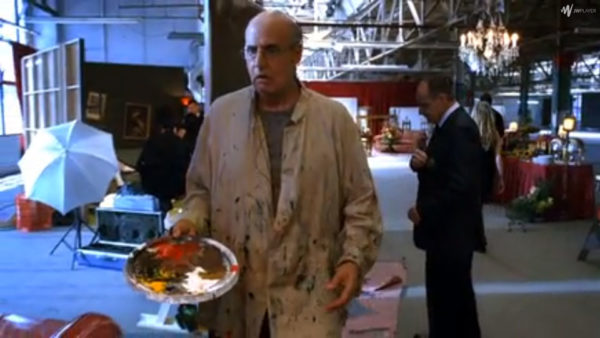
I first presented a collection of television clips depicting artists as part of a talk for the Fuller Terrace Lecture Series in 2012, a popular weekly lecture platform in a Halifax backyard. I had graduated the previous year with a BFA and was beginning to make decisions about the kind of creative practice I’d ultimately like to have, while navigating my way through common assumptions and expectations about working in the arts. These assumptions manifest as stereotypes and are perhaps best reflected to us as fictional artists depicted on mainstream television: the weirdo outsider, the emotionally fragile waif, the pompous elitist, the psychokiller, the sex maniac, etc. I am both embarrassed by and have deep affection for these formulaic portrayals.
 Stephanie Yee is a visual artist and cultural worker originally from Barrie, Ontario, now based in Halifax. Though beginning her academic career in theatre studies and performance, she eventually graduated with a BFA from NSCAD University in 2012. Using art as a form of communication, her works often speak to identity, relationships and the places we inhabit. Using performance, video, sculpture and installation, her works employ familiar imagery, processes and materials as a means of questioning preconceived notions. The audience is invited to use their own experience to help create the work’s meaning. This blurring of distinction between audience, artist and work stems from Yee’s radical re-contextualization of everyday details. When not focusing on her own art practice, she works with The Khyber Centre for the Arts as the Director of Outreach, and can also be found in her kitchen trying out new recipes, or perfecting old ones.
Stephanie Yee is a visual artist and cultural worker originally from Barrie, Ontario, now based in Halifax. Though beginning her academic career in theatre studies and performance, she eventually graduated with a BFA from NSCAD University in 2012. Using art as a form of communication, her works often speak to identity, relationships and the places we inhabit. Using performance, video, sculpture and installation, her works employ familiar imagery, processes and materials as a means of questioning preconceived notions. The audience is invited to use their own experience to help create the work’s meaning. This blurring of distinction between audience, artist and work stems from Yee’s radical re-contextualization of everyday details. When not focusing on her own art practice, she works with The Khyber Centre for the Arts as the Director of Outreach, and can also be found in her kitchen trying out new recipes, or perfecting old ones.
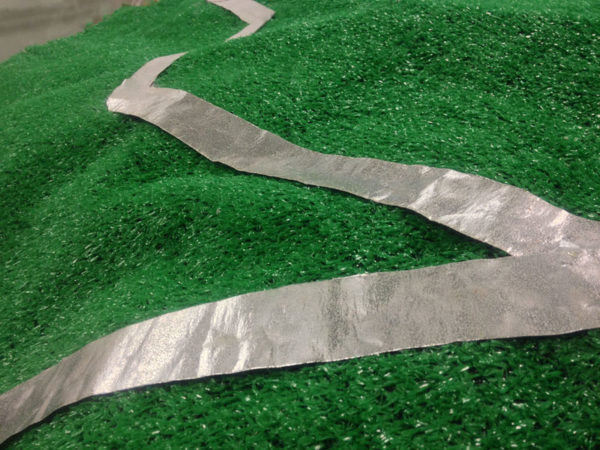
By exploring the parallels between person and place, my new body of work, entitled “Come From Away”, reflects on contemporary settlement in Nova Scotia. This past year I have travelled around the province collecting stories from people who, against economic odds, chose to come from away and make this place their home. Through my interview-based research, I had the opportunity to speak with many who feel a deep connection to this province, but also feel unrepresented by it. This installation speaks to the experience of those, like myself who came to Nova Scotia as a student and have since remained. In combining the Fort George landmark with the blanket fort, this piece considers the experience of the post-student identity and the issues Nova Scotia has with retaining the thousands of students who graduate here.
Mentors:
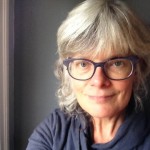 Barbara Lounder is a visual artist living in Dartmouth. She studied at Queen’s University and at the Nova Scotia College of Art and Design (NSCAD University), where she now teaches.
Barbara Lounder is a visual artist living in Dartmouth. She studied at Queen’s University and at the Nova Scotia College of Art and Design (NSCAD University), where she now teaches.
In her artwork, Lounder uses objects, words and images to make sculptural installations, performances and works on paper. Her recent projects focus on walking as a creative activity, and they often include participation from members of the public. She addresses themes and subjects drawn from personal experience, popular culture and political history.
Lounder’s work has been presented in Canada, USA, UK, Poland, New Zealand, Germany, Bulgaria and Mexico, and has been reviewed in such publications as C Magazine, Parachute and the New York Times.
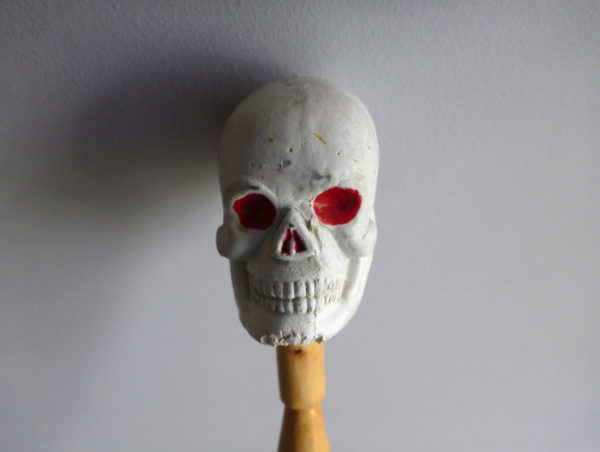
For this exhibition at the Craig Gallery, I am presenting a piece entitled “Drift and Flow.” The title refers to the psychogeographic practice of walking known as the “dérive” (or drift), and to mathematical concepts of randomness in genetic variation, from the study of heredity. I fashioned the walking stick after images of Charles Darwin’s whalebone and ivory walking stick on display at the Science Museum in London. The skull was a very popular form of “memento mori” seen in material culture from that period, and an effective reminder of mortality. In the round window is a Cytoscape image, a bioinformatic representing particular genetic expressions, interactions and networks.
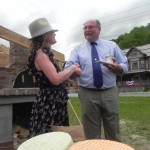 Eryn Foster is an interdisciplinary artist and curator based in Dartmouth NS. Over the past fifteen years, she has exhibited her works at several galleries, artist-run centres and museums across Canada and abroad. Over the past three years, her project North Adams Sourdough: A Gift of Cultured Culture has been exhibited at the Massachusetts Museum of Contemporary Art (North Adams Mass), the Confederation Centre for the Arts (PEI), and the Illingworth Kerr Gallery (Calgary). Awarded the Paris Studio grant from the Canada Council for the Arts in 2013, she has also participated in numerous other residencies including ones at Struts Artist Run Centre, the Banff Centre for the Arts, the Centre for Art Tapes, the Macdowell Arts Colony and Halifax’s Point Pleasant Park.
Eryn Foster is an interdisciplinary artist and curator based in Dartmouth NS. Over the past fifteen years, she has exhibited her works at several galleries, artist-run centres and museums across Canada and abroad. Over the past three years, her project North Adams Sourdough: A Gift of Cultured Culture has been exhibited at the Massachusetts Museum of Contemporary Art (North Adams Mass), the Confederation Centre for the Arts (PEI), and the Illingworth Kerr Gallery (Calgary). Awarded the Paris Studio grant from the Canada Council for the Arts in 2013, she has also participated in numerous other residencies including ones at Struts Artist Run Centre, the Banff Centre for the Arts, the Centre for Art Tapes, the Macdowell Arts Colony and Halifax’s Point Pleasant Park.
Recently Foster has also been crossing over into filmmaking and last year completed Here Kitty Kitty a feature film she made in collaboration with her friend and Argentine director Santiago Giralt. Currently she is also working on a feature length documentary project with another friend, and filmmaker, Sue Johnson. This documentary is a cinematic portrait of Halifax’s veteran experimental filmmaker James MacSwain.
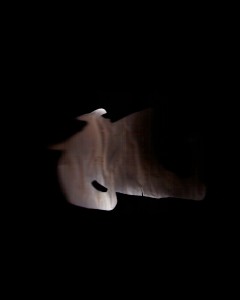
We shall not cease from exploration
And the end of all our exploring
Will be to arrive where we started
And know the place for the first time.
-T.S. Eliot.
 Wilma Needham was born Niagara Falls, Canada and has her MFA from NSCAD University where she taught in the Intermedia department, Media Arts Division and served as administrator in Fine and Media Arts. Her studio work examines the ways that issues of the environment, equity, gender and militarism shape our daily lives. With a foundation in printmaking and photography, her current studio practice spans multiple media and has been exhibited across Canada and Europe.
Wilma Needham was born Niagara Falls, Canada and has her MFA from NSCAD University where she taught in the Intermedia department, Media Arts Division and served as administrator in Fine and Media Arts. Her studio work examines the ways that issues of the environment, equity, gender and militarism shape our daily lives. With a foundation in printmaking and photography, her current studio practice spans multiple media and has been exhibited across Canada and Europe.

Ever since I moved into my home in Dartmouth in the 80s, I have collected “artifacts” from my garden, bits of household and family detritus that emerges as I prepare and tend my garden. This causes me to reflect on the history of my house and family, the context of the city, the domestic life of a culture. It also contrasts severely with what I know of other families in other homes in many other places.
Visual Arts Nova Scotia gratefully acknowledges core funding for the Mentorship Program and exhibition from The Robert Pope Foundation and The Craig Foundation.
The program is also supported by the Nova Scotia Department of Communities, Culture and Heritage, the Halifax Regional Municipality, the Craig Gallery, and artsVest: funded by Canadian Heritage, Arts Nova Scotia and Business for the Arts.
